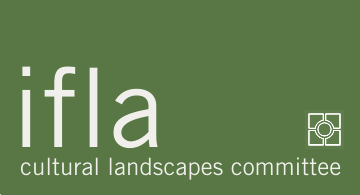best practices > format
Best Practice Projects & Initiatives Content & Format
A form is provided for submitting a project summary. The information requested addresses the type of cultural landscapes, its size, basic historical dates, owner/steward and a project description. We hope over time to create a series of sections on this website that group projects by type. For example there are a number of planning projects that may address a cultural landscape to include detailed reports about history, existing conditions, preservation interventions, management, funding or other strategies.
- Documentation Projects addressing Inventory, Historic Research, Cultural Landscape Assessment
- Planning Projects such as Cultural Landscape Reports, Comprehensive Master Plan, Preservation Plan, Sustainability Plan, Interpretation/Education Plan, Management Plan, Steward/Owner Strategic Plan, Funding Plan
- Implementation Projects to include Conservation/Repair, Preservation, Restoration, Reconstruction, Rehabilitation, Adaptation for New Use, Construction Projects, Staff Interventions, Volunteer Initiatives, Interpretation Fabrication/Installation, Signs & Furnishings Installation
- Management & Stewardship Undertakings that may address Landscape Management Systems, Staff Landscape Inspection, Maintenance Calendar, Laws & Ordinances for Protection
Cultural Landscape of various types and scales are addressed in documentation, planning, implementation and management projects. As you contribute an international array of projects of different scales and types into this website in the coming months, we will categorize them and eventually develop search capabilities. One way of categorizing is by definition, using the World Heritage definitions, included in Definitions section of the website. These are:
- Designed Cultural Landscape such as an historic estate, botanical garden, civic center, urban park, urban square/plaza, hospital grounds
- Evolved, Continuing Cultural Landscape to include a Historic Town or Village, Historic City, Traditional Agriculture Landscape, Traditional Craft Landscape, Heritage Area, Heritage Route or Corridor
- Evolved Relict Cultural Landscape to include historic and prehistoric properties that may be an Archaeological Site, a former but now abandoned Community, a created earthwork
- Associative Cultural Landscape that was the site of a historic event, inspired works of art, music or literature, place of religious or spiritual meaning, site of human struggle, protest or demonstration, or a battlefield, war encampment or burial site
The cultural landscape property mission, existing conditions, project program, uses, maintenance, sustainability and available resources all factor into the testing of a range of appropriate design solutions. In applying historic preservation principles, all intervention approaches respect and incorporate remaining historic features while new work must be appropriate to the property.


